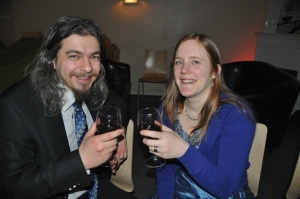Thomas Helleday is awarded the prize “for his impressive work to find new cancer drugs aimed at defective DNA-repair mechanisms in cancer cells”. 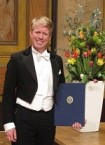
The award was presented at a prize ceremony at the Stockholm Concert Hall followed by a dinner at Nordiska Museet. The prize is Sweden´s largest national research prize in natural science to young researchers and includes SEK 4.5 million for research for three years.
Link to pressrelease (The Royal Swedish Academy of Sciences)
Filed under: Uncategorized | Leave a Comment
The Knut and Alice Wallenberg Foundation awards grant to a research team lead by Thomas Helleday
 The Knut and Alice Wallenberg Foundation has awarded SEK 14 million for the project “NOCA – Novel Cancer targets within nucleotide metabolism” coordinated by Thomas Helleday. The foundation supports research projects of high scientific potential and prioritizes interdisciplinary projects at the forefront of science. NOCA aims to find and evaluate novel targets for anti-cancer treatments by specifically targeting nucleotide metabolism. Cancer cells rely heavily on nucleotide hydrolases to repair damaged nucleotides caused by their increased oxidative stress levels and by inhibiting this repair mechanism the project aims to understand and validate a new class of highly specific anti-cancer treatments. The project is truly interdisciplinary and comprises a research team ranging from molecular biologists, medicinal chemists and structural biologists to pharmacologists and clinicians from Karolinska Institutet, Stockholm University and Uppsala University.
The Knut and Alice Wallenberg Foundation has awarded SEK 14 million for the project “NOCA – Novel Cancer targets within nucleotide metabolism” coordinated by Thomas Helleday. The foundation supports research projects of high scientific potential and prioritizes interdisciplinary projects at the forefront of science. NOCA aims to find and evaluate novel targets for anti-cancer treatments by specifically targeting nucleotide metabolism. Cancer cells rely heavily on nucleotide hydrolases to repair damaged nucleotides caused by their increased oxidative stress levels and by inhibiting this repair mechanism the project aims to understand and validate a new class of highly specific anti-cancer treatments. The project is truly interdisciplinary and comprises a research team ranging from molecular biologists, medicinal chemists and structural biologists to pharmacologists and clinicians from Karolinska Institutet, Stockholm University and Uppsala University.
Filed under: Uncategorized | Leave a Comment
Inauguration ceremony
 Thomas Helleday was installed as the Torsten and Ragnar Söderberg Professor of Translational Medicine at Karolinska Institute during a ceremony held at SciLifeLab, Karolinska Institutet Science Park on Wednesday 23 May 2012. Representatives from the Torsten Söderbergs Stiftelse and Ragnar Söderbergs Stiftelse, the President of Karolinska Institutet, Harriet Wallberg-Henriksson and the Dean of the Board of Research, Martin Ingvar as well as invited guests and family participated in the event featuring a lecture by Professor Thomas Helleday.
Thomas Helleday was installed as the Torsten and Ragnar Söderberg Professor of Translational Medicine at Karolinska Institute during a ceremony held at SciLifeLab, Karolinska Institutet Science Park on Wednesday 23 May 2012. Representatives from the Torsten Söderbergs Stiftelse and Ragnar Söderbergs Stiftelse, the President of Karolinska Institutet, Harriet Wallberg-Henriksson and the Dean of the Board of Research, Martin Ingvar as well as invited guests and family participated in the event featuring a lecture by Professor Thomas Helleday.
In his talk, Thomas Helleday spoke about his research within translational cancer research and the importance of academia for drug development. Thomas emphasized how important it is that today’s modern academic research also leads to new innovations and new therapies to treat patients.
About the Chair
Karolinska Institutet received a jubilee donation of 100 million Swedish kronor from the Torsten and Ragnar Söderberg Foundations in 2010 in honor of the 200 year anniversary of Karolinska Institutet. Half of this donation, 50 million Swedish kronor is for the Chair as Torsten and Ragnar Söderberg Professor in Translational Medicine. The Chair is placed at Science for Life Laboratory (SciLifeLab) which is a collaborative effort between four universities Karolinska Institutet, Royal School of Technology, Stockholm University and Uppsala University. The aim of SciLifeLab is to combine advanced state-of-the-art technologies with expert knowledge within translational medicine and molecular life sciences.
Filed under: Uncategorized | Leave a Comment
Our congratulations go out to Anna, this year’s winner of the Dr Jan Huynen Award for Life Sciences & Marketing for her thesis on overcoming resistance to certain cancer treatments. The Dr Jan Huynen Award is being presented for the second time this year by the transnational University of Limburg (tUL).
The jury, consisting of representatives from Maastricht University and Hasselt University and the regional business community, praised Hagenkort (a German national who studied in Maastricht and conducts her research in Sweden) for her clear and thorough research and her experimental yet convincing approach.
Well done Anna!
Filed under: Uncategorized | Leave a Comment
In the Stockholm group, Ivaylo Stoimenov was first up on the 18th March, bravely testing the water and paving the way for the other three. Four weeks prior to this, he was sat on a hospital ward, holding his wife’s hand as she gave birth to their baby daughter and drawing the last figures for his thesis with the other. They both came out beautifully (the baby and the thesis). Ivo and his examiner, Thierry Nouspikel from the University of Sheffield, turned out to be peas in a pod and had an excellent discussion on the interplay between transcription and recombination repair. They probably could have gone on until the early hours of the morning, but as bubbly wine and canapés were waiting back in the department, the thesis defence was tied up at a reasonable hour and celebrations begun. Ivo is currently enjoying taking the baby for long strolls in Golden Gate Park, San Fransisco, and visiting the terrapins, whilst looking for a suitable postdoc position.
Next in turn, was Petra Groth on 31st March. Ivo had just proved that the procedure was safe, so no reason to panic. He had also set the standard for the others and put the bar pretty high. This did not seem to worry Petra in the least, who took examiner George Iliakis’s, University of Duisberg-Essen, questions in her stride. There were moments where getting a word in edgeways was a challenge, but with the self-confidence of a scientist who has worked on her projects for 4 ½ years and knows what she’s talking about, Petra stepped up to the discussion and showed us all what she got. After a deserved holiday in Mexico, Petra is now tying up her projects in the lab, whilst applying for postdoc positions in other labs.
Cecilia Ström was number three and defended her thesis on 29th April. Hans Krokan, Norwegian University of Science and Technology – Trondheim, popped over from Norway to question Cissi on post-translational modifications in DNA base excision repair. Cissi flew through the cross-examination with flying colours and since becoming a doctor has continued in the Helleday lab, whilst considering her career options.
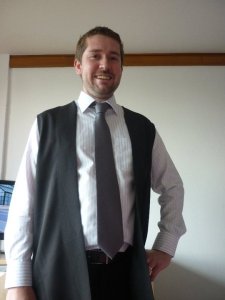 Last but not least, before the summer break, Ingegerd defended her thesis entitled replication fork stability in mammalian cells, with its cover adorned by a beautifully handcrafted DNA replication fork, made out of beads. Jan Hoiejmakers from the Erasmus University in the Netherlands had been dedicated the task of “grill-master” and seemed suitably impressed by Ingegerd’s excellent performance, which of course resulted in the 4th doctor’s hat of the Stockholm group. Ingegerd currently has a postdoc position at Uppsala University.
Last but not least, before the summer break, Ingegerd defended her thesis entitled replication fork stability in mammalian cells, with its cover adorned by a beautifully handcrafted DNA replication fork, made out of beads. Jan Hoiejmakers from the Erasmus University in the Netherlands had been dedicated the task of “grill-master” and seemed suitably impressed by Ingegerd’s excellent performance, which of course resulted in the 4th doctor’s hat of the Stockholm group. Ingegerd currently has a postdoc position at Uppsala University.Back in Oxford, things were getting similarly hot under the mortar board. Diana Muftic, having experience from both Stockhom and Oxford labs, was first to take the plunge on 9th May. The rest of the group were sat on tenterhooks as Diana was questioned for just over 3 ½ hours. Why was it taking so long? There was, however, no cause for concern, as Diana bombarded them with her many years of DNA repair knowledge and they finally let her go with the best possible outcome. PASS! This was a relief, as everyone was gasping for a glass of bubbly by that time. Diana now works in investment banking in London.
So five down and one to go, now Nick Pedley’s turn. Nick physically left the Oxford lab in September 2010 to move to Leicester and turn his attentions to becoming a Clinical Scientist. During those nine months, Nick has impressively written an excellent thesis as well as passing all his exams with top grades.
Finally, with final exams over and only a viva standing between him and a Doctor’s title, he was beginning to see the light at the end of the tunnel.
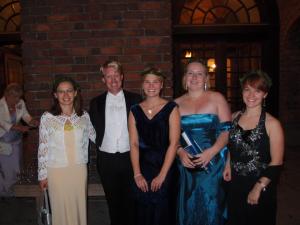
Thomas and Natalia accompany Petra, Cissi and Ingegerd to their graduation at the city hall in Stockholm.
Congratulations Ivo, Petra, Cissi, Ingegerd, Diana and Nick on becoming doctors. We are immensely proud of all of you and wish you the best in your future careers.
Filed under: Uncategorized | Leave a Comment
The European Research Council (ERC) has awarded Thomas Helleday 2.5 million euros over 5 years for the project “Genetic Networks as a tool for anti-Cancer Drug-Development”. The ERC supports high-risk high-gain projects and we are thrilled with the ERC’s decision to award us their highly competitive Advanced grant. It is encouraging to know that others also believe in our idea, which has been in the pipeline for a while but without the resources to see it through. The grant will allow us to expand our translational research with the aim to bring new and effective anti-cancer therapies to patients.
Filed under: Uncategorized | Leave a Comment
Forskare vid Stockholms universitet och Stockholm Science For Life Laboratory, SciLifeLab, har hittat ett nytt sätt att avgöra om en cancerbehandling fungerar. Upptäckten ger hopp om nya mer effektiva behandlingsmetoder för patienter med bröst- och äggstockscancer.
Bröstcancer är den vanligast förekommande cancerformen hos kvinnor i västvärlden. Ärftliga mutationer i bröstcancergenerna BRCA1 ger en ökad risk för bröst- och äggstockscancer. Forskarna har hittat ett microRNA, som är små sekvenser i celler som styr generna, som bryter ner bröstcancergenen BRCA1.
Professor Thomas Helleday, som har lett forskningsgruppen, har stora förhoppningar om att upptäckten ska ge nya skräddarsydda cancerbehandlingar.
– Nu gör vi en storsatsning för att med nya metoder ta fram framtidens läkemedel mot cancer. Mycket av denna verksamhet görs idag på Stockholm SciLifeLab i samverkan med laboratorium för kemisk biologi på Karolinska. Trots att microRNA bara upptäcktes för några år sedan kan vi redan nu visa att de kan vara viktiga i cancerutveckling och potentiellt för att identifiera vilka patienter som kan svara på nya skräddarsydda behandlingar, säger professor Thomas Helleday.
Thomas Helleday leder en forskningsgrupp som tidigare tagit fram en ny revolutionerande metod att behandla bröst- och äggstockscancerpatienter med så kallade PARP-hämmare, ett läkemedel som effektivt kan döda den ärftliga formen av cancern, men utan att ge de biverkningar som cytostatika innebär. Behandlingsmetoden används i kliniska studier i hela världen, men har tyvärr bara gett hopp åt de fåtal patienter som har en ärftlig cancer.
– Vår nya upptäckt kan göra att fler patienter får bättre behandling. Rent tekniskt är det så att man har tidigare känt till att också andra cancrar har tappat BRCA1 proteinet, men man har inte kunnat förklara hur eller hur man lätt ska kunna identifiera dessa patienter. Vi har nu funnit ett sätt som kan bidra till det, säger Thomas Helleday.
Thomas Helleday fick nyligen ett stort anslag på cirka 23 miljoner kronor från Europeiska forskningsrådet (ERC) för att utveckla ett nytt sätt att framställa läkemedel. Helleday utvecklar nya sätt att låta olika forskningsfält samverka.
– Vi som arbetar är bland annat läkemedelskemister, molekylärbiologer, läkare, matematiker och storskalig screening. Samverkan kommer göra att vi mer effektivt kan ta fram aktiva substanser, säger Thomas Helleday.
De nya resultaten publiceras i veckans nummer av den ansedda tidskriften Molecular Cell.
Ytterligare information
Thomas Helleday, professor molekylärgenetik, Institutionen för genetik mikrobiologi och toxikologi, Stockholms universitet, och Gray Institute for Radiation Oncology & Biology, University of Oxford, tfn 08-16 2914, mobil 0735122971, e-post helleday@gmt.su.se
Filed under: Uncategorized | Leave a Comment
Welcome Oliver, EMBO fellow
Dr Oliver Mortusewicz is one of this year’s recipients of the prestigious EMBO fellowship and will be carrying out his postdoc project on transcription associated recombination at the Helleday lab Oxford. Oliver completed his PhD under the supervision of Professor Heinrich Leonhardt at the LMU Biocenter at Ludwig Maximilians University Munich, where he has also been a postdoc for 2 years. The Helleday laboratory would like to wish Oliver a warm welcome to Oxford.
Filed under: Uncategorized | Leave a Comment
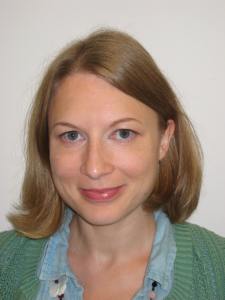 Our congratulations go out to Eva , of the Helleday lab Oxford, this year’s winner of the European Environmental Mutagenesis Society (EEMS) Young Scientist Award. Eva has an impressive CV with publications in journals such as Molecular Cell, EMBOJ and PNAS. Those of you working in the field of DNA repair may have crossed paths with Eva before, she is famously known as “the fibre lady” in our circles, for her use of the DNA fibre technique as a way to measure replication fork progression. Eva will present her work in a special award lecture at the EEMS annual meeting in Oslo in September. We are all very proud of her.
Our congratulations go out to Eva , of the Helleday lab Oxford, this year’s winner of the European Environmental Mutagenesis Society (EEMS) Young Scientist Award. Eva has an impressive CV with publications in journals such as Molecular Cell, EMBOJ and PNAS. Those of you working in the field of DNA repair may have crossed paths with Eva before, she is famously known as “the fibre lady” in our circles, for her use of the DNA fibre technique as a way to measure replication fork progression. Eva will present her work in a special award lecture at the EEMS annual meeting in Oslo in September. We are all very proud of her.
Filed under: Uncategorized | 3 Comments
Hot summer BBQ in Oxford
 As the grey clouds sailed in, covering the scorching sun that had just minutes earlier filled everyone with hope of a proper summer, the student shivered and thought to herself: wouldn’t it be typical if it rained, today of all days. For today was the day of the lab barbeque, a chance to get to know the others in a more relaxed atmosphere. The student got on her bike to make her way to the boss’s house, full of anticipation and crossed fingers, hoping for the clouds to sail away again. As she reached Thomas’s house in North Oxford, it would seem that her hopes for the sunshine to return had been answered, for the sun had put is hat and had without a doubt come out to play for a good few hours.
As the grey clouds sailed in, covering the scorching sun that had just minutes earlier filled everyone with hope of a proper summer, the student shivered and thought to herself: wouldn’t it be typical if it rained, today of all days. For today was the day of the lab barbeque, a chance to get to know the others in a more relaxed atmosphere. The student got on her bike to make her way to the boss’s house, full of anticipation and crossed fingers, hoping for the clouds to sail away again. As she reached Thomas’s house in North Oxford, it would seem that her hopes for the sunshine to return had been answered, for the sun had put is hat and had without a doubt come out to play for a good few hours.  Although, being a scientist, she thought to herself that this was probably just coincidence and not a direct result of her finger crossing. A full spread of barbequed meats and vegetables was waiting for her on arrival, with luscious accompaniments such as Caesar salad, tsatsiki and herb coated potatoes. While the lab children played around her, and the others chatted, she tucked into the feast laid out before her and sipped at her pink sparkly. When she had eaten her fill from the barbeque, a giant platter of strawberries and cream appeared and disappeared almost as quickly.
Although, being a scientist, she thought to herself that this was probably just coincidence and not a direct result of her finger crossing. A full spread of barbequed meats and vegetables was waiting for her on arrival, with luscious accompaniments such as Caesar salad, tsatsiki and herb coated potatoes. While the lab children played around her, and the others chatted, she tucked into the feast laid out before her and sipped at her pink sparkly. When she had eaten her fill from the barbeque, a giant platter of strawberries and cream appeared and disappeared almost as quickly.  The student and her colleagues sat in short sleeves all evening conversing and giggling. When it began to get chilly, the boss lit a fire and they sat around it singing, juggling and telling stories. As the student cycled home, she contentedly thought to herself how fortunate she was to have found this place in the world. A place where she could do great Science, while at the same time enjoy the company of her new found friends
The student and her colleagues sat in short sleeves all evening conversing and giggling. When it began to get chilly, the boss lit a fire and they sat around it singing, juggling and telling stories. As the student cycled home, she contentedly thought to herself how fortunate she was to have found this place in the world. A place where she could do great Science, while at the same time enjoy the company of her new found friends
Filed under: Uncategorized | Leave a Comment


